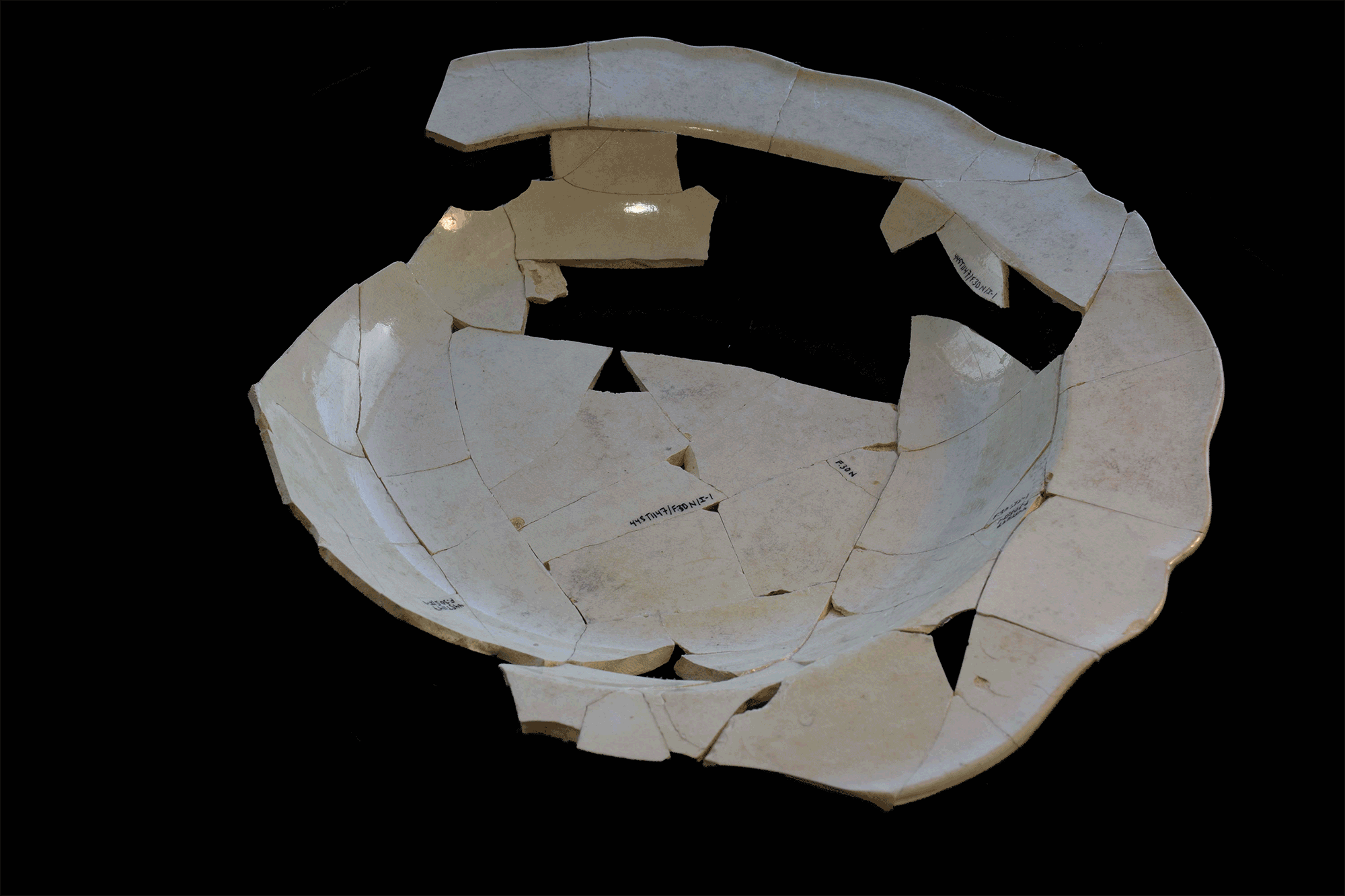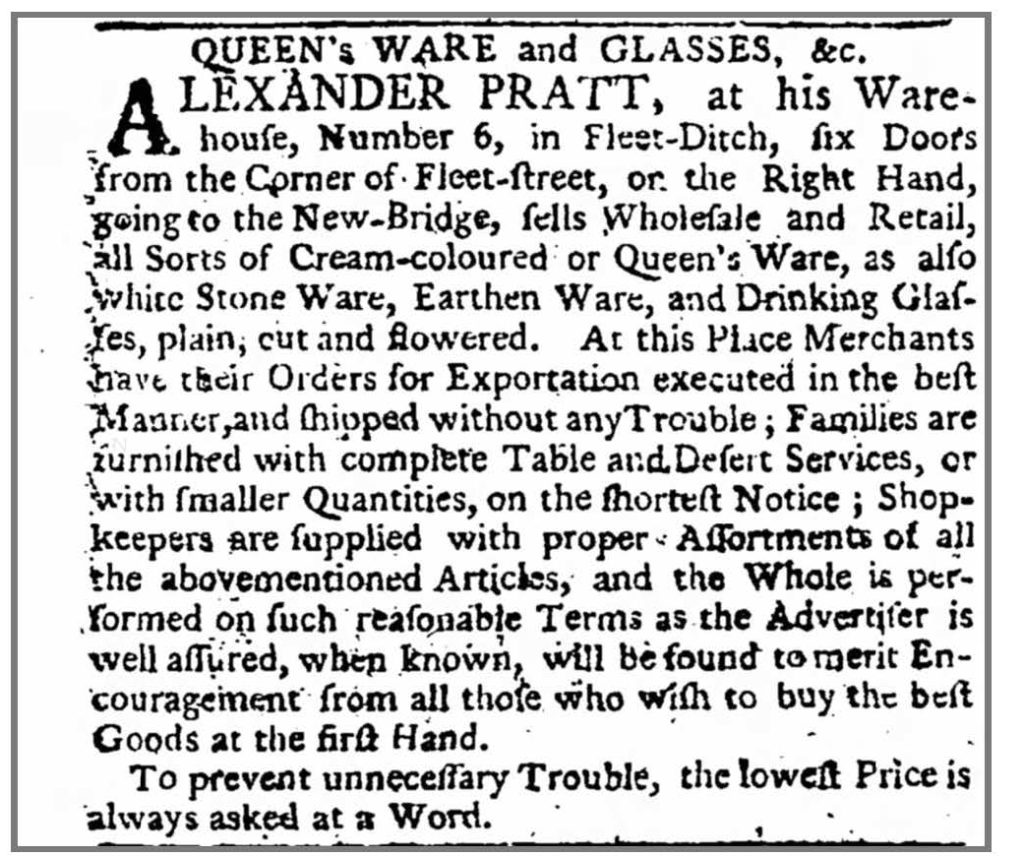Featured Fragment – Queen’s Ware
By Kerry S. González
The image to the below is a creamware plate with a rim pattern known as “Royal Shape.” Creamware was also commonly referred to as “Queen’s Ware” after its creator, Josiah Wedgwood, successfully completed a commission for this same ceramic type for Queen Charlotte in 1765 (Wedgwoodmuseum.org 2016). Upon the completion of her order, the Queen allowed Wedgwood to name his earthenware after her. Her Majesty’s order included “a complete set of tea things,” which also comprised “a dozen cups for coffee, six fruit baskets and stands, six melon preserve pots and six hand candlesticks” (Wedgwoodmuseum.org 2016). This successful delivery resulted in Wedgwood being named the official potter of the queen.
With a name like “Queen’s Ware” and its obvious ties to royalty, Wedgwood’s refined cream-colored earthenware was in great demand even among nobility. According to the Wedgwood Museum, “cream coloured earthenware was so widely used for dining that people no longer referred to ‘Common pewter’ [common pewter referring to the popular pewter dinnerwares] but to ‘Common Wedgwood’ instead” (Wedgwoodmuseum.org 2016). It was a versatile ceramic, and people enjoyed all types of foods off of their new or second-hand Queen’s Ware dishes from the late-eighteenth through early-nineteenth century (see advertisement).
The plate below was found during excavations by Dovetail, conducted on behalf of Stafford County. It was located within an eighteenth-century midden in the town of Falmouth. The area is now part of John Lee Pratt Park. With its basin-like form, this plate could have been used to serve a thick soup or chicken pudding (recipe below from Randolph 1827).
Beat ten eggs very light, add to them a quart of rich milk, with a quarter of a pound of butter melted, and some pepper and salt; stir in as much flour as will make a thin good batter; take four young chickens, and after cleaning them nicely, cut off the legs wings &c. put them all in a sauce pan, with some salt and water, and a bundle of thyme and parsley, boil them till nearly done, then take the chicken from the water and put it in the batter pour it in a dish, and bake it; send nice white gravy in a boat.
Typically, on vessels such as these, striations (deep lines cutting through the lead glaze on the surface) are visible with the naked eye. These marks are the result of repeated cutting of food and scraping in the dish; however, the plate below has almost no apparent use-wear pattern. This could suggest infrequent use or a short life span.
Any distributions of blog content, including text or images, should reference this blog in full citation. Data contained herein is the property of Dovetail Cultural Resource Group and its affiliates.
References:
Public Advertiser
1770 Queen’s Ware and Glasses, &c. The Public Advertiser, London, England, April 10, 1770.
https://www.newspapers.com/image/34410950/#, accessed November 2016.
Randolph, Mary
1827 The Virginia Housewife. Plaskitt, & Cugle, Baltimore, Maryland.
Wedgwoodmuseum.org
2016 The Wedgwood Museum. https://www.wedgwoodmuseum.org.uk/
learning/discovery_packs/pack/classical/chapter/queens-ware, accessed November 2016.


